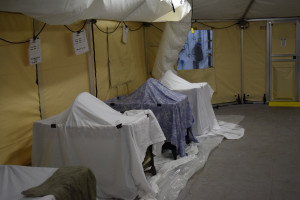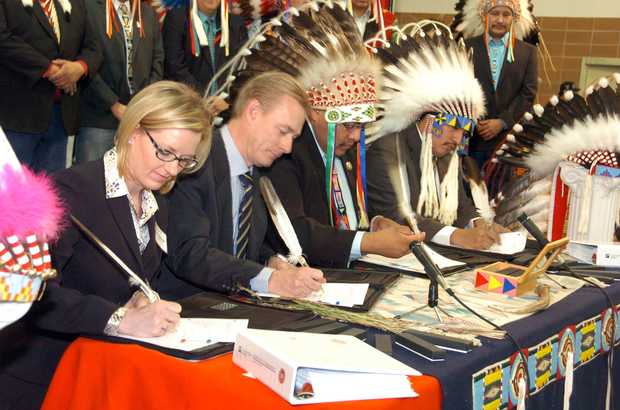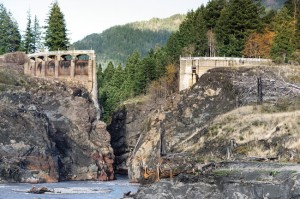‘Small’ Oil Spills Can Add Up To Big Costs

Rowan Moore Gerety/Northwest Public Radio / Northwest Public Radio
by Rowan Moore Gerety Northwest Public Radio
State Fish and Wildlife Biologist Brian McDonald is careful not to raise his voice as he approaches a row of baby cribs in a warehouse in Pasco, Washington. Each one holds mallard ducks.
“They’re typically in pretty rough shape—they’re sick, they’re cold, they’re oiled, they’re hungry,” he says.
The ducks were hit by an oil spill in Sunnyside earlier this month. McDonald says oil coats the ducks’ feathers and breaks down their natural waterproofing, “so each time they go into the water, it’s like a scuba diver going in without a wetsuit.”
Though they don’t always make headlines, 95 percent of oil spills in the U.S. are relatively small — less than the size of a tanker truck you might see on the highway. Washington State’s Department of Ecology responds to about 400 oil spills a year, nearly all of them a few thousand gallons or less.
Jeff Lewis, who leads the department’s spill cleanup in central Washington, says: “Early on, it’s usually a lot of detective work. In this case, it wasn’t intuitive where this thing came from.”
With spills to running water like the one in Sunnyside, he says, “they had to find the most upstream pipe they could see that was producing oil, and start narrowing your search.”
Lewis says responders looking for the source of the Sunnyside spill eventually traced the oil over 24 miles of moving water, from the Yakima River through a network of irrigation ditches. The culprit was a single storage tank on an old feedlot. Cleanup took as many as 50 people working 11 days straight.
“Even though 2-3,000 gallons of oil may not seem like a lot where it’s in aggregate form, in a tank, when it spreads out over the water, it can get into the weeds, into the cattails,” Lewis says. That makes cleanup a much more complicated undertaking.
All told, the U.S. spends almost $3 billion annually cleaning up spills on lakes, rivers, and streams. That’s the equivalent of one Exxon Valdez cleanupevery single year.
It’s too soon to say exactly how the Sunnyside spill began, but corrosion and punctures are the most common cause. So-called “structural failures” account for one out of every four inland spills.
“The oil industry in the U.S. has been around 120 + years,” observes geologist Ed Owens. “There are pipelines laid down, which, in some areas, are long since abandoned.”
In rural areas, used motor oil like the stuff in Sunnyside was long used to keep dust down on dirt roads. Everywhere there’s oil, there are tanks or pipes to hold it: everything from farms and gas stations to backup generators.
Since a lot of this infrastructure is underground, Owens says leaks often go unnoticed until it’s too late, as happened with a spill discovered beneath New York City’s JFK airport in the 1990s.
“Thousands of gallons of jet fuel had been spilled over the years,” Owens says, “and only when some of that leaked into a small creek, and it was decided to better look at this, they discovered the problem was really quite huge.”
Over time, the EPA has strengthened regulations on facilities used to store and transport oil. Spills today are just a quarter of what they were in the 1970s.
But those regulations don’t cover everything. “There’s bound to be old tanks out there that predate the regulations,” Owens says. “They’ve never had to fit into the system, because either they went out of use—that doesn’t mean to say they were empty—” or, at a few thousand gallons, they’re small enough that no special permit is required.
The EPA says it didn’t know about the Sunnyside tank until after the spill. And when the agency does do inspections, it finds leaks more than half the time.
Pro-coal Montana tribe weighs in on Cherry Point terminal

BY RALPH SCHWARTZ, The Bellingham Herald
Lummi Nation, which has fished the waters off Cherry Point for centuries, and Crow Nation, a tribe in Montana sitting on billions of tons of coal, have taken opposite stances on a proposed coal terminal on the Lummis’ historic fishing grounds.
Crow Chairman Darrin Old Coyote wrote the U.S. Army Corps of Engineers on Jan. 20, asking the federal agency to bring the two tribes together to discuss Gateway Pacific Terminal. The Crow letter was in response to request on Jan. 5 from Lummi Nation to the Corps, asking the agency to reject the terminal because it interfered with the Lummis’ ancient fishing practices, which were reinforced in U.S. law by an 1855 treaty.
The terminal is currently under environmental review.
“We are concerned about recent news reports that Lummi is asking the (Corps) to stop the environmental review process based on perceived impacts to their treaty fishing rights,” Old Coyote wrote.
In its response, dated March 10, the Corps said it would not organize meetings between the tribes. The agency suggested the Crow ask the Bureau of Indian Affairs.
“The Corps wouldn’t be the appropriate agency to facilitate such a meeting,” Corps spokeswoman Patricia Graesser said on Friday, March 20, in an email to The Bellingham Herald.
Leaders at Crow Nation were not available for comment on Friday.
The Corps said it would meet a different request from the Crow, to keep the tribe informed about the Corps’ review of Gateway Pacific Terminal and to include in that review, when appropriate, the Montana tribe’s position.
What’s at stake for Crow Nation is the 2013 agreement between the tribe and Cloud Peak Energy that would allow the mining company to extract 1.4 billion tons of coal from Crow land. The deal has already enriched the Crow by at least $3.75 million and would be worth millions of dollars more, depending on the amount of coal mined.
That, in turn, could depend on whether Gateway Pacific Terminal is built. Coal that would pass through the Cherry Point terminal would come from Montana and Wyoming.
“The Gateway Pacific Terminal project will ensure access to markets for Crow coal,” the tribal chairman’s letter said. Old Coyote has said in media reports that two-thirds of the Crow’s budget comes from coal revenue.
The Lummis have hosted the Crow at Cherry Point and have told the Montana tribe about the anticipated disruptions to Puget Sound fishing areas, Lummi Chairman Tim Ballew said.
“We’ve done extensive fact finding with other governments, including the federal government and other tribes,” Ballew said in an interview on Thursday, March 19. “We’ve come to the decision that our treaty right cannot be mitigated.”
“We have an explicit treaty fishing right that the Corps needs to respond to,” Ballew added. “That letter and request from the Crow is not a setback.”
The Lummis on March 5 sent the Corps details about the tribe’s fishing practices in response to a request from the Corps for more information, to support the tribe’s Jan. 5 request that the coal terminal be stopped. Ballew said Thursday the tribe had not yet heard back from the Corps.
Native American Illusion Magic Show: Cherokee Secrets
Northwest Magician Launches his Illusion Magic Show
Sunday, 2:00 p.m. April 19 (Everett Civic Auditorium)
Press Release, Frank Dunn
Frank Dunn Magician is not your ordinary magician. Master Magician Frank Dunn has been performing magic ever since he got inspired as a child in the 1970’s with a magic set. Eight years ago he added his first illusion show to his stage magic, incorporating elements of his Eastern Band of Cherokee Indian heritage. He is an enrolled member of the Cherokee tribe. Frank also worked three years for the Native Arts and Cultures Foundation, supporting art for Native Americans nationally. While there, he got inspired by the arts of music, dance, theater, and, of course, traditional Native American artwork. “This particular illusion magic show I started with the story,” said Frank. “I wrote a Native American story about contemporary issues of being a Native American today in the 21st century, while pulling on some great historical stories of the Cherokee, like the story of good wolf verses bad wolf – whichever wolf you feed is the wolf that will win in the end. After I had a good story, I brought in the art of drums, totem poles, bow and arrows, pottery, and dance. Lastly, I added the illusions and magic that brought the story to life.”
“One of my goals was to create a show that almost anyone could connect with, even people with hearing loss or vision impairment. I am also very pleased to have helped a high school student, Jeff Lunde, with his senior project, called Magic. Jeff has been helping me build illusions, and I have been teaching him the art of magic.”
“I recently realized that the gift of magic I have been given has allowed me to break through to people of many cultures, from being invited to the East Indian Vedic Cultural Center to share magic and nan with them, to being invited into the Jewish, Lebanese, Chinese, Japanese, Hawaiian, many Native American tribal communities, as well as into the deaf community. I’ve seen magic delight people from so many cultures – and from ages 3 to 92! ”
Frank Dunn is, indeed, an uncommon and original magician.
Tickets for the Cherokee Secrets shows can be purchased online at: Frankhat.com, or at the door.
More information: Frank Dunn 1-800-890-4188
Email: frank_magician@yahoo.com
Download story at: www.frankhat.com/press
First Nations University of Washington 44th Annual Spring Pow Wow, April 10-12
Interior Department Issues New Fracking Rules For Federal Lands

Dan Joling, AP
By Scott Neuman, NPR
The Department of the Interior has unveiled new regulations on hydraulic fracturing operations that take place on federal lands, requiring companies using the drilling technique to ensure wells are safe and to disclose chemicals used in the process.
The rules change follows a more than three-year review process and will affect the 90 percent of oil and gas wells on federal lands that now use so-called fracking to extract oil and gas.
“Current federal well-drilling regulations are more than 30 years old and they simply have not kept pace with the technical complexities of today’s hydraulic fracturing operations,” Interior Secretary Sally Jewell said.
Key provisions of the new rules, set to go into effect in 90 days, include:
— Requiring strong cement barriers between the well and any water zones it passes through.
— Requiring companies to publicly disclose chemicals used in hydraulic fracturing to the Bureau of Land Management through the website FracFocus, within 30 days of completing fracturing operations.
— Stricter storage protocols for recovered waste water used in fracking.
— Measures to lower the risk of cross-contamination from fracking chemicals by requiring companies to submit detailed information on the geology, depth and locations of wells that already exist.
“This rule will protect public health and the environment during and after hydraulic fracturing operations at a modest cost while both respecting the work previously done by the industry, the states and the tribes and promoting the adoption of more protective standards across the country,” said Assistant Secretary for Land and Minerals Management Janice Schneider.
The Associated Press writes:
“The rule has been under consideration for more than three years, drawing criticism from the oil and gas industry and environmental groups. The industry fears the regulation could hinder the drilling boom, while some environmental groups worry that it could allow unsafe drilling techniques to pollute groundwater.
“The final rule hews closely to a draft that has been lingering since the Obama administration proposed it in May 2013. The rule relies on an online database used by at least 16 states to track the chemicals used in fracking operations.”
Depaving Cities, Undamming Rivers—Here’s How We’re Undoing the Damage
All around the United States, people are stepping up to help a damaged planet heal.

By Diane Brooks, Yes! Magazine
Releasing the rivers
The largest dam-removal project in history reached completion last fall, when excavators dredged the final tons of pulverized concrete from the Elwha River channel in Western Washington. Native fish, banished for 100 years from their historic spawning habitat, already were rediscovering the Elwha’s newly accessible upper stretches. Within weeks of the final explosion in August, threatened bull trout and chinook salmon were spotted migrating beyond the rubble.
“It was a thrill,” said Olympic National Park spokeswoman Barb Maynes. Before the Elwha Dam was built in 1910, the river produced an estimated 400,000 fingerlings per year, a number that dwindled to 3,000 in recent decades. All five native species of Elwha salmon are expected to repopulate the river.
More than 80,000 dams more than six feet high block U.S. waterways, and activists are cheered by the Elwha success story. Two hydroelectric dams once blocked the Elwha; both now are gone. Sediment that was trapped behind them is washing downstream, replenishing habitat. The first 67,000 seedlings (of a planned 350,000) to help restore native vegetation are already planted on the sites of the former dams and reservoirs. A documentary about the project, Return of the River, came out in 2014.

-
Photo by Shutterstock.
Botanical remedies
Headache or back pain? Before you reach for the bottle of aspirin, consider aspirin’s ancient precursor: white willow bark. Or perhaps echinacea to boost the immune system, aloe vera to heal burns, and black cohosh to ease hot flashes.
The trend away from the profit-based pharmaceutical industry toward natural, age-old botanical remedies is beneficial for the environment and wildlife as well as for the humans who take medications. A U.S. Geological Survey study found chemicals from prescription drugs and over-the-counter medications in 80 percent of water samples drawn from streams in 30 states; those waters flow into lakes, rivers, and eventually the oceans.
Alain Touwaide, co-founder of the Institute for the Preservation of Medical Traditions, says pharmaceutical chemists have inverted humanity’s relationship with medicines. “When a sick person used a plant, this person relied on history, the use of the plant over centuries,” he says. Now a researcher starts with a chemical and then experiments to find its uses. Botanical medicine has “an almost philosophical component,” he says, which helps with healing. Users tap into an interactive “sympathy” between humans and the environment, he says.

-
Photo by Paul Dunn.
Citizen turtle remedies
When a community of threatened Hawaiian green sea turtles began hauling themselves from the ocean onto the northern beaches of Oahu to bask and sleep in the sunshine, word soon spread through the island’s tourism industry. Families began plopping children on turtles’ backs for photos and poking, prodding, and pushing turtles back into the surf.
Concerned, the national Oceanic and atmospheric administration (NOAA) launched a “Show Turtles Aloha” campaign in 2005. North Shore residents quickly joined in, and in 2007 they created the nonprofit Malama na Honu (Protect the Turtles) to monitor the beach and educate visitors every day of the year. About 60 trained Honu Guardian volunteers take turns patrolling Laniakea Beach, working three-hour daylight shifts. They educate tourists about the ancient species, ask beachgoers to keep a respectful distance, and collect data for NOAA.
Hawaiian green turtles were listed as a threatened species under the Endangered Species Act in 1978. They’ve made a remarkable recovery since then, and their major nesting beach at French Frigate Shoals was added to the Papahānaumokuākea Marine National Monument in 2006. The number of nesting turtles has grown annually from 67 in the early 1980s to more than 800 today, according to Irene Kelly, NOAA’s regional sea turtle recovery coordinator.

-
Dennis McClung stands inside what used to be a swimming pool in his backyard in Mesa, Arizona. Now it serves as a closed-loop food-producing farm for his family. Photo by Laura Segall.
Swimming pool becomes backyard farm
It’s a typical Mesa, Arizona, suburban subdivision, except for that corner house with a broccoli patch growing on its low-pitched roof. And those goats, chickens, and ducks roaming the backyard, near the solar panels erected above the entryway to that greenhouse planted in the deep end of an old swimming pool. When Dennis and Danielle McClung bought their ‘60s-era home in 2009, they hatched an eccentric but modest plan to make the best of that decrepit, way-past-its-prime pool. Two days after they moved in, Dennis McClung erected his first in-pool greenhouse, intended to provide food for their young family. He had recently quit his job as a Home Depot department manager; his wife was a nurse. “I convinced my wife of my crazy plan, and she went with it,” he says. “We really wanted to live a more sustainable, self-sufficient life, and we thought this was good idea. And it just kept getting better and better, the more we put into it.”
Today their backyard is a mini-ecosystem—McClung calls it a “closed-loop food-producing urban greenhouse”—and their home is headquarters for the Garden Pool nonprofit organization. Its official aim: sustainable food production, research, and education. At night the chickens roost above the pool’s deep-end rainwater pond so their droppings contribute to an aquaponics habitat for tilapia fish. The McClung’s natural water filtration system uses duckweed and solar energy; their organic greenhouse plants are rooted hydroponically, without soil. Pond snails, which probably hitchhiked in on the duckweed, provide calcium for the egg-laying chickens and help manage a pond-sludge problem.
On a typical day, the system provides the couple and their three children with about half their diet, McClung says. That includes veggies and herbs from the greenhouse; apples, citrus fruit, figs, sugar cane, bananas, and pomegranates picked from a 40-tree grove in their side yard; along with eggs and goat milk.

-
Photo by Shutterstock / Holly Kuchera.
Making room for carnivores
When gray wolves were reintroduced to Yellowstone National Park in the mid-1990s, we learned valuable lessons about the critical role of large carnivores in balancing an ecosystem. The impact on the landscape was dramatic. Two decades later, stream banks stripped by booming populations of deer and elk are growing new trees and shrubs, and birds and beavers are returning to the feast. Even the physical landscape has been altered, as returning vegetation stabilizes banks and prevents erosion.
Now a growing movement of scientists and conservationists is campaigning to go further to ensure the health and survival of large carnivores: defining and protecting ancient migration corridors across the continent. a key component of this campaign is educating affected communities about the importance—and practicality—of coexisting with species that traditionally were feared and killed.
In her new book The Carnivore Way: A Transboundary Conservation Vision, Cristina Eisenberg says coexistence with wild predators isn’t just possible: it’s critical. “Carnivores protect biodiversity, which creates ecosystems more resilient to climate change. The climate change crisis we are facing makes it critical for us to help carnivores thrive wherever we can,” says Eisenberg, lead scientist at Earthwatch Institute.
The Wildlands Network has identified two initial priorities for protection. The Eastern Wildway runs 2,500 miles from Florida’s Everglades through the forests of Alabama and along the Appalachian Mountains to the boreal forests and Maritime Provinces of Canada. The Western Wildway is a 5,000-mile corridor stretching from Mexico’s Sierra Madre Occidental to Alaska’s Brooks Range, running along the Rocky Mountains.

-
Photo from Depave.
Asphalt, be gone
Across the nation, activists are organizing work parties to rip up excess pavement in playgrounds, parking lots, and empty lots, replacing it with pervious surfaces such as porous asphalt, block pavers, and greenery of all sorts. The swaths of impervious pavement that characterize our urban and suburban communities, from sprawling shopping malls to ubiquitous cul-de-sac neighborhoods, have vast ecological impacts. Rainwater—which otherwise would soak into the earth and benefit the habitat—is polluted with oil, antifreeze, and pesticides and then diverted into local streams and rivers.
The Portland, Oregon, nonprofit Depave promotes the transformation of over-paved places, such as schools, while engaging and inspiring communities to reconnect urban landscapes to nature. The organization uses community partnerships and volunteer power, and creates educational events, to pursue its goal of nurturing livable cities where people and wildlife can coexist. Since its initial project in 2008, Depave has transformed more than 123,000 square feet of asphalt, diverting about 2.9 million gallons of stormwater from storm drains. Above, the Creston School depaving project last fall.

-
Photo from Rebuild by Design.
Rebuild smarter
The devastation wrought in 2012 by Hurricane Sandy, including 117 U.S. deaths and an estimated $5 billion in damages to greater New York alone, shocked planners and policymakers into fashioning innovative new tactics to protect communities from future disasters. Rebuild by Design, a unique public-private partnership, is identifying and funding ambitious, creative infrastructure improvements in New York, New Jersey, and Connecticut. A contest initiated by the U.S. government already has allotted $930 million to six winning projects, each crafted with powerful community input.
“Sandy exposed physical and social vulnerabilities of the region. It was not built to withstand the forces of climate change, and now we can rebuild it with better foresight,” said Amy Chester, Rebuild by Design’s managing director.
Major philanthropic partners staffed the U.S. Department of Housing and Urban Development contest, and the project is funded by Congress, along with the Rockefeller Foundation and other private supporters. Design teams worked closely with local residents, businesses, and governments to codesign realistic solutions that carry broad support, Chester said.
In Manhattan, for instance, the community examined how river berms can benefit daily public life. “A wall can be a piece of art; a wall can be a part of a park. A wall should never be something that walls off the communities from the waterfront,” said Chester. One winning proposal: the Big U river fortifications. A 10-mile stretch of Lower Manhattan is to be protected from future storms and rising sea levels with projects including wide, grass-topped berms and rolling hills and bridges, providing new recreational spaces along the Hudson and East rivers.
Bellingham council could weigh in on state fish consumption, pollution rules

THE BELLINGHAM HERALD
BY SAMANTHA WOHLFEIL, The Bellingham Herald
BELLINGHAM — Bellingham City Council is considering asking the state for tighter pollution rules protecting water and the fish people eat.
On Monday, March 23, the council will discuss signing a letter to the Department of Ecology that would request tighter water quality standards than what the department is currently proposing as part of a years-long update process.
That would go against the grain of many other cities around the state that support the plan from Ecology and Gov. Jay Inslee as a compromise on health standards and strict pollution guidelines that affect wastewater treatment plants.
Ecology is looking at increasing the average amount of fish that state rules assume each person eats from 6.5 grams per day, about one 7-ounce meal per month, to 175 grams per day, about 6 ounces per day, to closer match the amount of fish folks in the Pacific Northwest actually eat.
Raising that number would mean more stringent controls on pollution, because if people are eating more fish, they could be consuming more toxins.
Under the proposal, Ecology also would lower the acceptable risk of getting cancer from the current rate of one in 1 million if someone were to eat the average amount every day for 70 years, to one in 100,000 for many of the toxins.
Those two measures fall under the umbrella of what are called human health criteria, which dictate exactly how much pollution is allowed into the state’s waterways. The current levels were set in a 1992 federal rule applying to 14 states that had failed to meet the requirements of the 1972 Clean Water Act.
For some, including Bellingham City Council members Roxanne Murphy and Michael Lilliquist, lowering the cancer risk rate seems like taking a step backwards.
“Primarily my concern is that Native Americans and Asian communities, for example, can often consume 10 times the amount of seafood that other communities might take in,” Murphy said. “I really want to bring light to how a higher cancer risk will affect everybody. I don’t think it’s the right approach for everybody’s well being.”
Lilliquist said the state shouldn’t downsize the cancer guidelines currently in place, even though it might cost more.
“There’s been some resistance to tighten the rules from city governments,” Lilliquist said. “No one’s against clean water, but if we have to redo all of our stormwater drains, prevent more water pollution, it would be quite expensive. My hope is that state officials will see that strong water quality standards are not up for debate.”
Even with lowering the cancer risk tenfold, the new standards would be more protective for about 70 percent of toxins, and in cases where it would be less protective, the state will maintain the stricter standard, as explained in a policy brief from the governor’s office.
Still, increasing the acceptable risk rate above the current one in 1 million is shocking to Dr. Frank James, medical officer for the Nooksack Indian Tribe, health officer for San Juan County and an assistant professor of public health at University of Washington.
“I think if the public understood, maybe they wouldn’t agree that that’s a good idea,” James said. “It’s the most common standard in federal regulation and in all state regulation. Us varying from that is a very odd thing.”
Council will consider signing its letter and submitting it on the last day Ecology is taking public comment on the proposed rule.
A draft of the letter states that the council is in support of the governor’s comprehensive approach to improving water quality, but there are concerns about loosening the allowable cancer risk rate.
The letter also states that Bellingham council is aware that stronger standards will make it harder for the city to comply with pollution and stormwater controls, and that serious conversations about financial assistance are needed at the state level.
Those concerns are part of the reason the Association of Washington Cities, a nonprofit that lobbies for Washington cities and towns at the state level, supports the compromise presented by the governor.
Carl Schroeder, government relations advocate for the association, said it has looked at the issue and worked with the governor’s office and Ecology to set achievable goals.
The concern for some toxins is that changing the standards to a rate lower than what is already found in the waters of the state would mean that anyone discharging into that water, such as a municipal wastewater treatment plant, would need to meet the “ultra low standard right at the end of the pipe,” Schroeder said. The technology doesn’t exist to meet some of those low rates, he said.
“If you put a new standard out there that ratchets it down, and there’s no technology to do it, you drive a bunch of expense and utility rates go through the roof to put on the newest technology that doesn’t even meet the standard,” Schroeder said. “That’s been addressed largely on this risk rate discussion, which does increase the protections for 70 percent of the toxins. It doesn’t roll anything back, it just moderates the stringency.”
BNSF Railway Could Face Big Fines After Hazardous Spills In Washington

Courtney Flatt
By Ashley Ahearn, KUOW
Washington regulators say the region’s biggest oil-train operator should be penalized after failing to comply with reporting requirements following 14 spills of hazardous materials, including crude oil.
The state Utilities and Transportation Commission said Thursday an investigation had found that between Nov. 1 of last year and Feb. 24, BNSF Railway committed 700 violations of the state’s reporting requirement for railway spills of hazardous materials. Four of those spills involved trains carrying crude oil through Washington state.
Under the state’s requirement, BNSF was obligated to call a toll-free number within 30 minutes of an incident.
“When a company fails to notify, that means that critical response resources might not be deployed and that really could cause potential harm to the public and the environment,” commission spokeswoman Amanda Maxwell said. “That could also lead to a delay in response and containment resources necessary to clean up the spill. That’s why that 30 minutes is vital to the response and reporting of the incident.”
Companies can face fines of $1,000 for each day such an incident goes unreported.
State officials say BNSF Railway could owe up to $700,000 for failing to inform responders about the 14 spills.
Courtney Wallace, a spokeswoman for BNSF, issued a prepared statement, saying her railway “believed we were complying in good faith with the requirements from our agency partners.”
The statement went on to say BNSF had followed guidance from state regulators with the commission, reviewed its own reporting notification process, and changed its practices to address regulators’ concerns.
According to the commission, BNSF will have the opportunity to request a hearing to respond to the allegations and ultimately the commissioners will decide the outcome. Commissioners will consider several factors, including how serious and harmful the violations were to the public, whether the violations were intentional, and how cooperative and responsive BNSF was.
Congresswoman Lee Marks National Native HIV/AIDS Awareness Day
Press Release, Congresswoman Barbara Lee
Washington, D.C. – Since 2007, National Native HIV/AIDS Awareness Day is observed each year on the first day of Spring.
The day began as a way to increase local and global awareness about the impact of HIV/AIDS on American Indian and Alaska Native people.
“The HIV/AIDS epidemic continues to affect all of our communities, including American Indians and Alaska Natives. While we are seeing lower rates of new infections within these communities, we must continue to ensure that the culturally and linguistically-competent education, counseling, testing and care are available to all,” said Congresswoman Barbara Lee, co-chair of the Congressional HIV/AIDS Caucus.
“HIV/AIDS is a rising threat to our native populations; Tribal and Indian Health priority must be increased access to HIV screening and consistent education efforts for everyone,” said Gayle Dine’Chacon, MD, Medical Director at the Pueblo of Sandia Health Center and Former Surgeon General of the Navajo Nation.
According to the Centers for Disease Control and Prevention (CDC), 18.9 percent of the American Indians and Alaska Natives living with HIV are undiagnosed. This undiagnosed rate is significantly greater than the overall average of 14 percent.
“This National Native HIV/AIDS Awareness Day, I encourage everyone to get educated and tested. It’s on us to take our health in our own hands,” added Congresswoman Lee.












